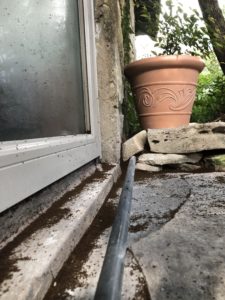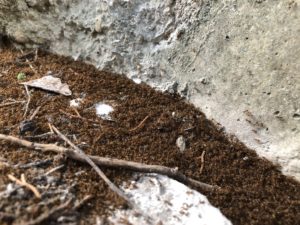What are crazy ants an how to get rid of them
Table of Contents
What Are Crazy Ants?
Crazy ants, also known as crazy raspberry ants or tawny crazy ants, are a common species of ants in Texas. These ants are easily identifiable by their red body, sporadic movements, and their erratic behavior. They are approximately 2.2 to 3 mm in length, contain 12 segments, and don’t have the traditional curb found in other ants. Furthermore, they have extremely long legs and an elongated antenna, which makes them easily distinguishable from other species. These ants are omnivorous and are highly versatile in infiltrating buildings that have food sources. Just like other ants, they have a sweet tooth and can be found underground and nesting inside wood.
Crazy ants have also been known to inflict serious damage on various types of electrical equipment. As soon as you spot a couple of crazy ants aimlessly wandering around your home, it's imperative to identify, locate, and treat their nests as soon as possible.
Preferred Habitat
Crazy Ants be found under or in many objects. As multiple queens lay hundreds of eggs and group up with other colonies, each colony can contain millions of ants. Colony nests are found in small cracks and crevices, particularly in moist areas. Once inside a building, they wander around searching for food. Outside, they may be found in damp soil, under rocks, stumps, timbers, compost, garbage and potted plants. Additionally, crazy ants travel quite a distance to forage for food, and so their nests may be far away in distance from their foraging areas.
These ants generally thrive in warm climates, so you should expect to run into them around the spring and the mid-summer months.
Diet
Crazy ants are predators, foragers, and scavengers; they can be found foraging inside your kitchen. These ants prefer to eat protein, animal matter, grease, and other insects. However, they will readily eat sweets if available. When eating sweets, they are attracted to honey from beehives, ripened fruits, honeydew, and any sweet part of a plant. Crazy ants may only want protein during the summer months, but that may vary from colony to colony.
Signs of a Crazy Ant Infestation
You may find that a single crazy ant colony is considerably small in size. Don't be fooled— this may be a sign of an infestation since these ants typically have clusters of colonies nearby. These clusters of colonies are known as super colonies. Each super colony typically has about 15-20 queen ants, each capable of establishing a new colony nearby. These nearby colonies are known as budding.
Due to their erratic, jerky movements and reluctance to form trails, it may be difficult to spot or find the actual colony. They will either be seen in trails or wandering "aimlessly" on walls or countertops. However, to encourage trail formation, try to use honey & peanut butter as bait. Once you can visually follow the trails with your eye, try to see where the ants are entering the structure and take note of where you suspect the nest or colony may be located.
How Do You Get Rid of Crazy Ants?
Spray
Using a non-repellent ant spray, you can then treat both the trail and the colonies simultaneously. These sprays contain an insecticide, are readily available in the market and can be effective if you have located the nest. The insecticidal chemicals stick to the bodies of the infected ants and pass it on to other individuals inside the colony.
Dust
For better results, you can complement spray insecticides with a dust treatment. This can be applied in crevices, cracks, holes, gaps, corners, and all areas of your property suspected with ant activity.
Contact The Bug Master
Here at The Bug Master, we consider proactive and preventive actions, along with exclusion techniques, to stop ants from getting inside your home. Additionally, our team will remove as many of the environments that create protective nest sites as possible in order to minimize the size of the ant population.
<Contact Us Today for a Free Estimate!>


